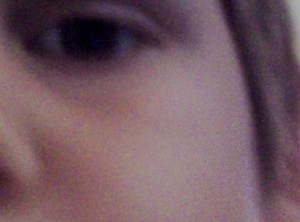
By Patty Juliuson, columnist
Have you ever looked at your surroundings through the bottom of a glass? Everything is distorted and sort of fuzzy. You might be able to make out a few features of the place, but if you tried to use only that view to describe the scene, the details would be inaccurate or incomplete. The same thing happens when looking through one of those kaleidoscopic toys that turns your surroundings into a mosaic. You glimpse colors and patterns, but they aren’t the whole picture.
While at our daughter’s wedding, we gave our 6-year-old grandson a modest digital camera. He was enchanted and spent the afternoon pointing and clicking. When we downloaded his photos, he was very pleased at his work, but admitted he needed a steadier hand, a better understanding of the zoom feature and some idea of when to use the flash. The adults were amused at his angles: there were a lot of kneecaps, nostrils and chins. He’s small, and from where he stands, that is what he sees.
Perspective is a funny thing.
The way we view the world is shaped by many factors: gender, age, culture and ethnicity, to name a few. We come from different backgrounds and experiences, so each of us has a particular outlook on situations we face. What we encounter at one stage in life may take on fresh significance as we develop, and issues that once seemed so important may diminish over time.
One thing I have noticed- my perspective is up to me.
There are times in life when my viewfinder needs a steadier hand. Rather than be reactionary, I can calm down and find a better way to approach a problem. Sometimes I need to have a clearer understanding of my zoom feature. I can decide to take a wider view of life and stop focusing on petty things that happen. And perhaps I need to add a little flash. Choosing to approach situations cheerfully is far better than a bleak and gloomy outlook.
Finding a new perspective is a little like dissecting a work of literature or art. There’s the basic framework of the piece, and then there are the details, colors and patterns that add to the meaning. Viewed independently, those features don’t necessarily make sense, but when blended into a whole, they form something vibrant and meaningful.
Each time we read the story or view the art, we approach it with more experience and, ideally, greater maturity. Go back and reread the story. Step away from the work of art and look at it again. You may find that there is something new and important you haven’t noticed. Change perspective, and you change meaning.
Pardon me while I move my chair. See you in class.